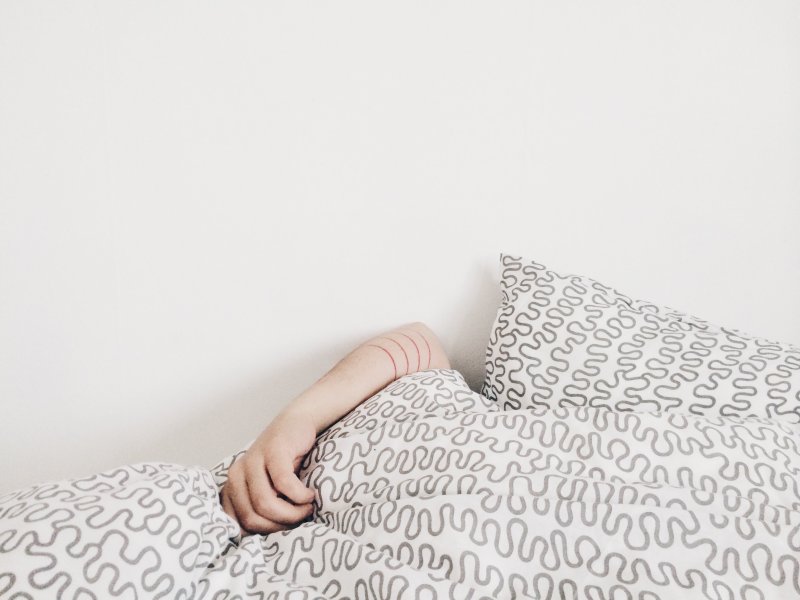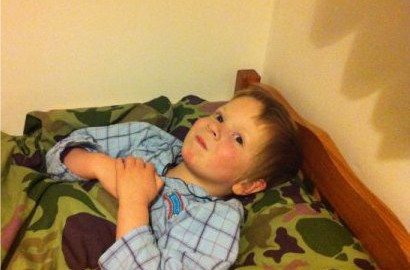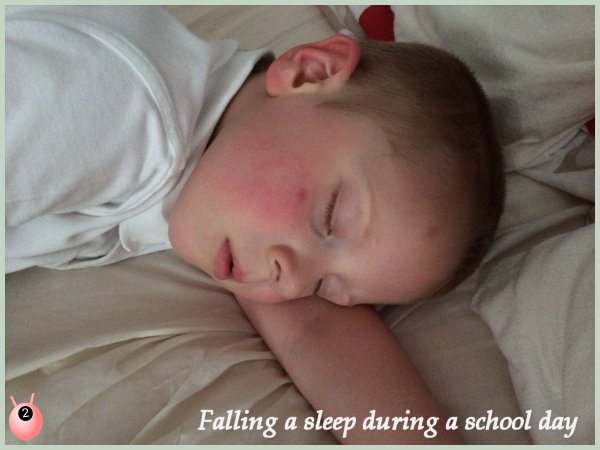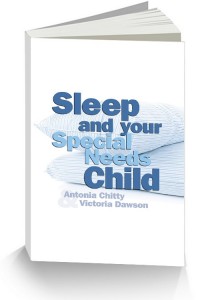You know that feeling of getting back to your own bed – that nowhere else feels just quite right? It is the right temperature, the size of the bed (being just right for the position you want to be in), the feel of the sheets, blankets and pillows as well as the hardness of the mattress and maybe even the smell of the room. When you are away it is these little things that may mean you find it difficult to sleep – possibly even making you feel irritable. This is just a small insight into what it may be like for someone with Sensory Processing Disorder to get to sleep – even in their own room. When The Sensory Seeker struggles with sleep I try to consider each and every one of the senses and try to eliminate things that may be keeping him awake. The main problem is he may not even know what it is – so cannot really communicate what the problem is.
Trying to sleep with Sensory Processing Disorder when the Temperature is wrong
We know what it is like trying to sleep when it is too hot – or even too cold. But generally we are able to adjust this – turn on a fan, grab an extra blanket, wear more or less clothes. The individual with Sensory Processing Disorder may either not realise that this is the sense causing the problem, or be able to take action, or possibly it could cause more problems (eg the fan interferes with the noise sense, the extra blanket the touch sense and so on). I think it is important to also understand that just because you think it is getting cold at night now may not be how they are feeling – we are all different after all. You may really need to just experiment with fans, heaters, layers of clothing//blankets etc – and just keep listening to the individual with SPD (not just their words but how they react). It may change every night. They may be asking for water and you may think it is a distraction, but they could genuinely be too hot. Be careful not to give them too much to drink at night that results in a problem with bedwetting though!
Trying to sleep with Sensory Processing Disorder when the Touch is wrong
Do you have to sleep with a blanket touching you even though you are boiling hot? Trying to sleep when things do not feel right is probably the problem we can relate to the most. Again this is about experimentation and listening to the individual with Sensory Processing Disorder until the right combinations of touch are found: A technique called Brushing may help before bed or using weighted blankets (although they are controversial as to whether they could be taken off in an emergency okay). Try different nightwear (or without), blankets, pillows – even think about the air! For example is that fan blowing on them? This could be something they like or dislike! You may need to think about the position of the fan – is it blowing from above or to the side, can you move it? How hard is the bed? Could you put a blanket underneath the sheet to make it softer?
Trying to sleep with Sensory Processing Disorder when the Smell is wrong
I think smell is hugely neglected when it comes to considering how to help in general but it can be just as much of an annoyance as the other senses. Before even thinking about trying to get to sleep I make sure that I open the windows in the day to allow fresh air in (and shut them at night to keep the noise out). For our Sensory Seeker what works is keeping a fresh smell (and sometimes using air fresheners). Again you really need to just try and smell the room, and work with the individual adjusting things that MAY (or may not) be the problem until you hit on the perfect combination (which can then just as easily change the next night).
Trying to sleep with Sensory Processing Disorder when the Light is wrong
Whether it is having the room dark or light which helps them to sleep, I think that it is one of the easier things to control. If the individual with Sensory Processing Disorder wants light there are all manner of different lights, designs, colours, shapes and sizes on the market to meet each of their individual needs, and allowing them to be positioned where they need to be. Of course there are even ones to meet any obsessions they have too.
 The Sensory Seeker says that he is afraid of the dark however (possibly just due to his age); that monsters are going to get him. Trouble is he is really sensitive to light and it wakes him up (yay for winter on its way!). To get around this we have a blackout blind and have positioned his bed away from the window. If this had not of worked we were going to try a sleep mask (which he would have liked as he likes the sense of touch). However, also consider whether they will be trying to get out of bed whilst still wearing the mask – my husband worried that if we got one then The Sensory Seeker half asleep would try to go to the toilet in the night without removing the mask and fall down the stairs. We also got him a Worry Eater to which we have told him will eat his anxieties and protect him from danger.
The Sensory Seeker says that he is afraid of the dark however (possibly just due to his age); that monsters are going to get him. Trouble is he is really sensitive to light and it wakes him up (yay for winter on its way!). To get around this we have a blackout blind and have positioned his bed away from the window. If this had not of worked we were going to try a sleep mask (which he would have liked as he likes the sense of touch). However, also consider whether they will be trying to get out of bed whilst still wearing the mask – my husband worried that if we got one then The Sensory Seeker half asleep would try to go to the toilet in the night without removing the mask and fall down the stairs. We also got him a Worry Eater to which we have told him will eat his anxieties and protect him from danger.
Of course you also need to take into account other visual factors such as the colour of the room, how cluttered it is with things to see, etc.
Trying to sleep with Sensory Processing Disorder when the Noise level is wrong
I like it quiet when I am trying to sleep in bed and would rather have a window shut on a hot day than hear the sound of a dog barking or a car alarm going off. Your child may be able to sleep with ear defenders or ear plugs if the noise is too loud. If you are really lucky you could sound proof the room. But not everyone wants quiet whilst they try to get to sleep or are sleeping – and some kind of radio may help with this – or reading/singing to them until they fall asleep. Or leave some white noise – like a vacuum on for them. In fact our own Sensory Seeker has been known to listen to Yoga Nidra to help get to sleep (this helps switch the brain between the nervous systems as well as providing him with the noise input he needs).
Also you need to think about body position – I said above I like quiet when trying to sleep in bed because I know if I am sitting up in a moving car I actually find it easier to sleep if the music is on (when I am a passenger I made add). This is just an example how things you may think you have found the answer to for one of the senses can change when you consider another.
Trying to sleep with Sensory Processing Disorder when the Taste is wrong
This goes back to what happens before bed – I guess how long before they go that they brush their teeth. We find allowing The Sensory Seeker to brush his teeth and get ready for bed a while before actually going to bed helps – and this may be to do with the fact that he is not distracted by the taste of the toothpaste flavour when trying to go to sleep. I know it sounds silly but it really is important just to focus on each sense and really have a good think about what could be stopping them.
Of course it could be that the individual with Sensory Processing Disorder you are trying to get to sleep is just a human being – and we all struggle or don’t want to go to sleep sometimes do we?! Especially if they are a child – I remember trying to stay awake all night with my sister, or they could be excited/anxious. Give them plenty of time to talk – however hard they find expressing their feelings.
Written in Partnership with The Lighting Superstore







